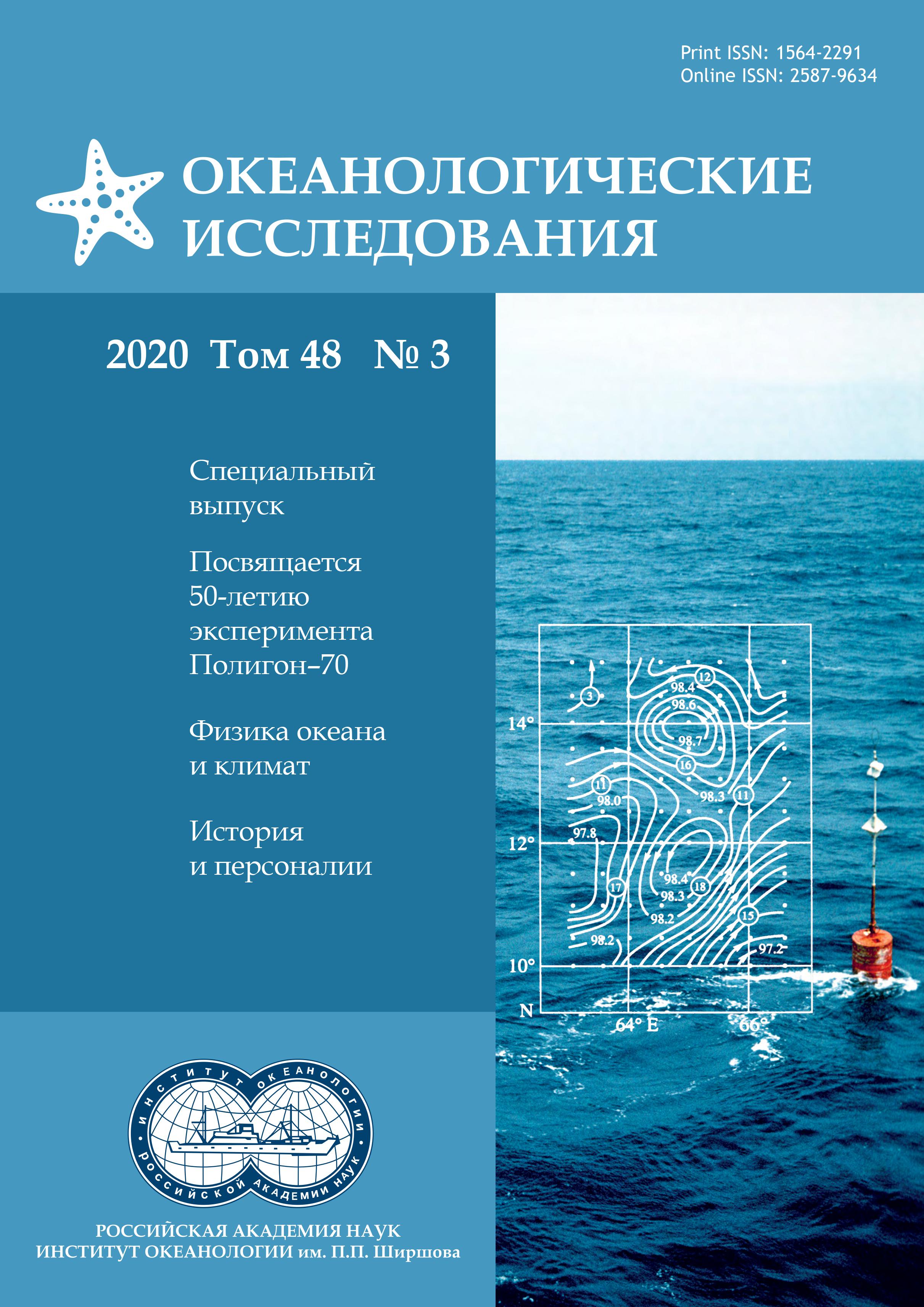ЭКСПЕРИМЕНТ ПОЛИГОН–70 – НАЧАЛО НОВОГО ЭТАПА ГИДРОФИЗИЧЕСКИХ ИССЛЕДОВАНИЙ МИРОВОГО ОКЕАНА (К 50-летию открытия океанских синоптических вихрей)
Аннотация
Пятьдесят лет тому назад, в 1970 г., в результате выполнения советской межведомственной океанографической программы Полигон–70, в северной субтропической зоне Атлантики были экспериментально обнаружены океанские синоптические вихри. Это открытие оказалось одним из наиболее значительных событий в океанологии ХХ века. Обладающие пространственно-временными масштабами, аналогичными атмосферным вихревым образованиям, вновь открытые вихри получили название синоптические по аналогии с циклонами и антициклонами в атмосфере. В отличие от известных ранее замкнутых циркуляционных структур, отделившихся от крупномасштабных струйных течений, синоптические вихри оказались свободными, то есть имеющими, по существу, инерционный волновой характер. Скорость течения в таких вихрях зачастую превышала среднюю скорость течения в данном районе. Описывается история проведения эксперимента Полигон–70 и его основные результаты. Приводятся краткие сведения о других крупных «полигонных» программах ИО РАН и некоторых международных проектах по изучению вихревых структур.
Передача авторских прав происходит на основании лицензионного договора между Автором и Федеральным государственным бюджетным учреждением науки Институт океанологии им. П.П. Ширшова Российской академии наук (ИО РАН)












